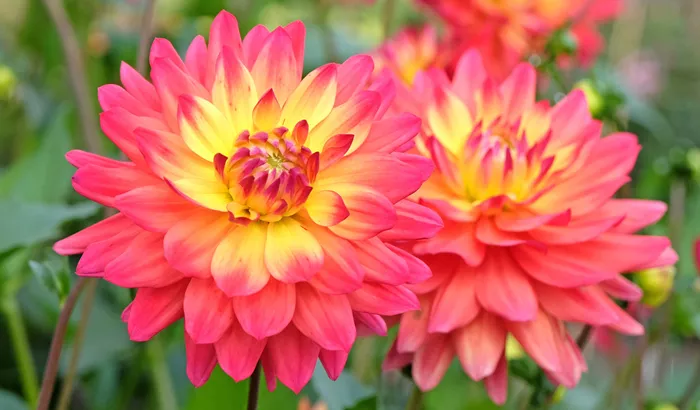Dahlias, known for their stunning variety of colors and forms, begin to bloom in mid-summer after tubers are planted once soil temperatures reach about 60°F. These tropical-origin plants take around 90 to 100 days to flower, offering vibrant displays from spiky cactus to giant dinner-plate dahlias.
To keep dahlias blooming all summer, regular deadheading is essential. Removing spent flowers by cutting stems back to the main branch encourages the plant to focus energy on producing new buds rather than seeds, resulting in bigger and better blooms. This pruning should be done weekly during peak blooming periods.
Adequate watering is crucial—deep watering once or twice a week depending on rainfall and heat helps maintain flower production. Dahlias benefit from a fertilizer low in nitrogen but high in phosphorus, which supports continuous blooming without promoting excessive leafy growth at the expense of flowers.
Extreme heat, especially in zones 9 and 10 where temperatures often exceed 90°F, may cause dahlias to pause blooming. In such climates, some gardeners dig up tubers during summer to protect them. In milder climates, dahlias can bloom continuously until the first frost.
Additional care tips include providing full sun with some shade during extreme heat to prevent flower scorch, and monitoring for pests like aphids and earwigs that can damage blooms and reduce flowering potential. Proper air circulation also helps prevent fungal diseases that could hinder bloom longevity.
By following these practices—regular deadheading, consistent watering, balanced fertilizing, and heat management—gardeners can enjoy a long season of spectacular dahlia flowers throughout the summer.


